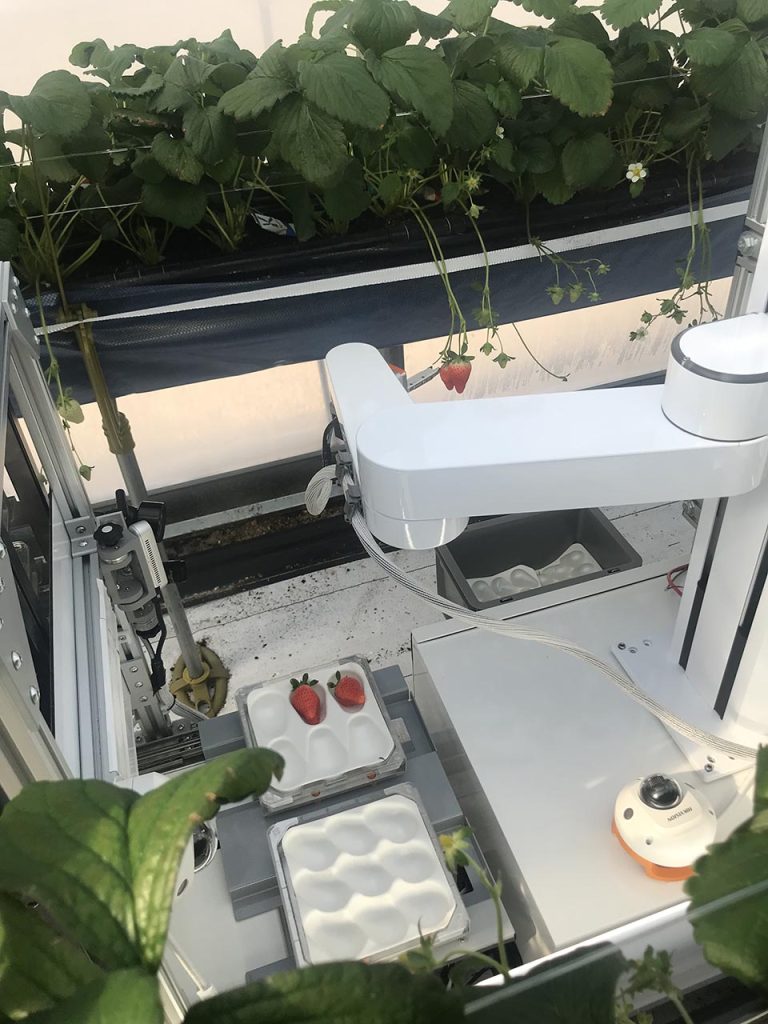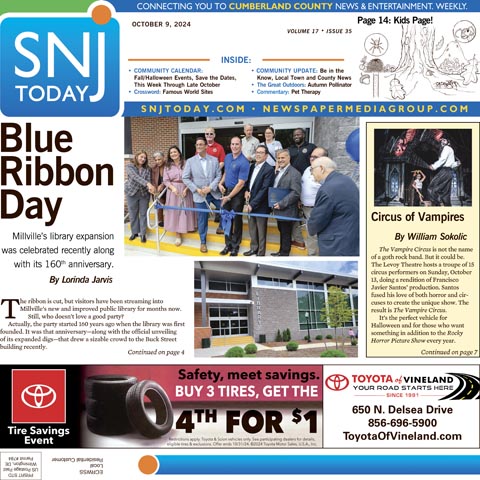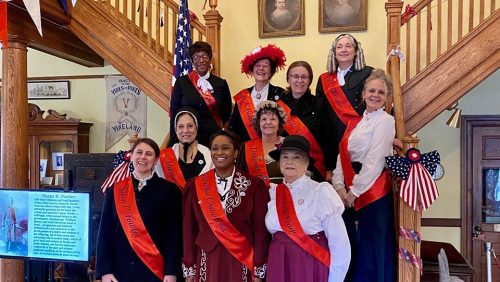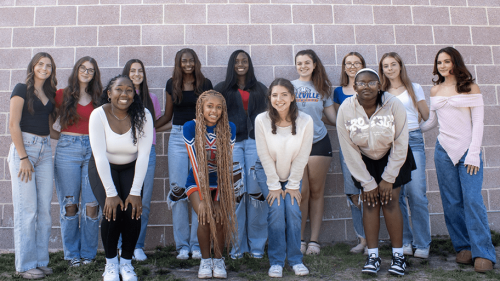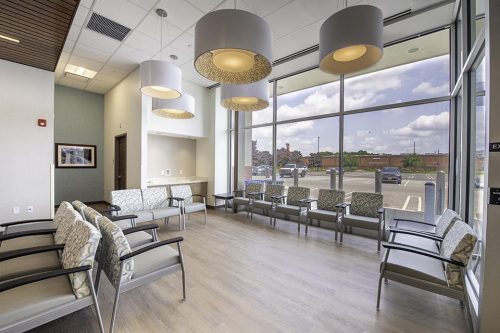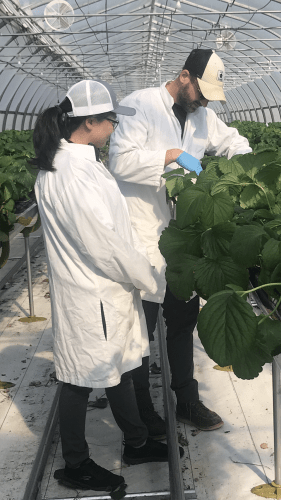
The founder of Vineland, Charles K. Landis, promoted his town widely 160 years ago as a location with excellent farming conditions: favorable climate, good soil, and affordable land.
The message reverberated in Europe, especially Italy, and thousands relocated to start the farms and the town we enjoy today.
History is repeating now on a smaller scale, but the farmers are coming instead from MIT and Cornell and using computers and robots as their farm tools.
A well-funded ag-tech startup named Zordi, with a goal of revolutionizing greenhouse produce growing, has come to Vineland.
“We did a widespread search for our trial site throughout Maryland, Pennsylvania, New York, and New Jersey,” said Gilwoo Lee, PhD, CEO and cofounder of Zordi. “First, we zeroed in on southern New Jersey, then we chose Vineland for its soil, climate, site condition, and affordability.”
When I arrived at the modest site with the extraordinary purpose, at first it looked like the dog was guarding the door of the ramshackle farmhouse.
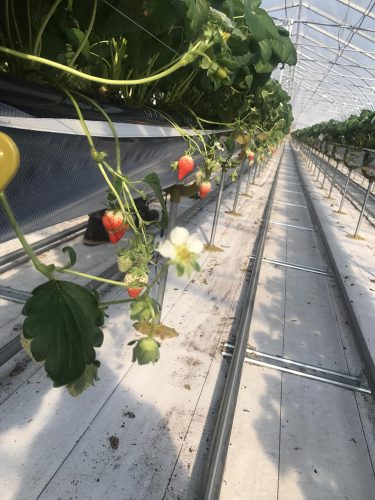
Instead, Charlie walked gently at the feet of her master Casey Call as the leadership team of Zordi and I walked the short distance to its production greenhouse. Even the dog seemed to exude the excitement of this company with the ambitious mission of changing the principles of agriculture.
Call, a Zordi co-founder and head grower, is a sixth-generation farmer on his family’s 10,000 acres in western New York state. The first Zordi greenhouse site is there; Vineland’s is the second.
Zordi’s determined leadership is combining conventional farming wisdom and the limitless tools of robotics to take two greenhouses growing hydroponic strawberries into a dynamic future. The company plans to market turnkey, transferable structures and technology, widely franchised, which will provide growers with the tools and systems for the best possible “smart farming.”
“Greenhouse farming is one of the most sustainable and climate-resistant ways to grow fresh produce, but there is significant labor involved,” Lee said. “What we try to do is combine robots and AI (artificial intelligence) to meet this challenging matrix,” Lee said.
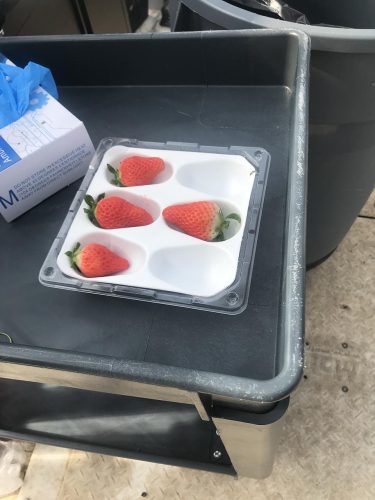
The Vineland farm is an early “proof point” for Zordi in making sure that everything works. Under human supervision, robots survey and analyze the unique variety of strawberries imported from Korea, and they actually pick and pack the product.
I got to see a robot pick a strawberry. Easy, right? Like a parlor trick? Not quite.
Its training instantaneously analyzed factors like the berry’s size and how long it had been growing. It evaluated its color and ripeness. Then, it gently tugged the stem, pulling the berry directly to the plastic packing container.
Or not. If the berry wasn’t perfectly ready for market, the robot moved ahead on its trolley-like tracks to check and possibly harvest the next one.
The information used by the harvesting robot is fed to it by the observation robot, which trolls the greenhouse daily to monitor the growing process at many data points including the temperature and humidity of the environment.
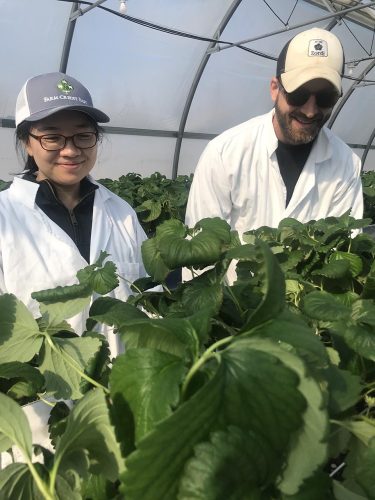
There are about 35,000 plants in the spotless, 20,000-square-foot building. Growing is year-round.
The humans’ jobs are basically to keep the robots “on track.”
While I was there, Zordi’s chief technology officer Ryan Knopf was updating the programming of the harvester robot, a daily task.
“Plants grow the way they want to grow,” Knopf said. “We have to make robots able to accommodate all the changes and to work in as many climates as possible.”
A tweak, a trial picking, another tweak, a pause, a consultation with other technical staff, then, a clearance to proceed followed by an evaluation.
“I would have picked that one,” Knopf said as the robot moved along. The intelligence is not perfect.
The premium, ultra-sweet berries are shipped to large retailers in New Jersey and New York, such as Wegman’s and H Mart, which set the retail prices.
Lee said that the best strawberries are complicated to grow, so the market is relatively lucrative. Zordi chose them as its first crop because they require specific growing climates and because they are perishable when they are harvested. If the model works for strawberries, it will work for most other crops.
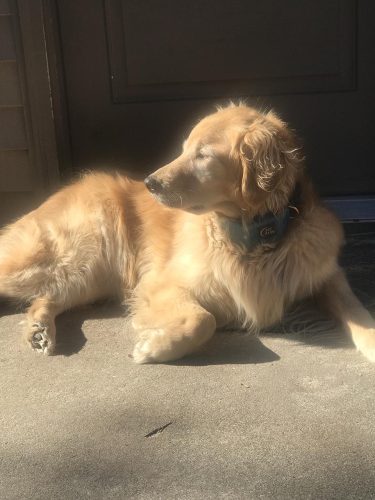
Zordi, founded in 2020, has received three funding rounds totaling $20 million from Khosla Ventures, a Silicon Valley firm known for providing early capital to promising companies. Khosla funded Open AI, the creator of the large language model ChatGPT, which gathered 100 million users in the first two months and brought AI into worldwide view.
Growing the finest strawberries with advanced and proprietary means is not an end in itself—far from it. Once the process is fully tested and deployed, Zordi’s mission is to scale the model by widely sharing it with the agricultural universe.
“Our autonomous system ensures consistent, high-quality operation wherever our greenhouses are deployed,” said Lee. “That’s the key to scalable deployment worldwide.”
Lee said she is motivated by her desire to put her machine learning and robotics expertise to work in a field where it could be most effective, hence, sustainability in agriculture.
Call comes to the same place, but through an agriculture-specific lens.
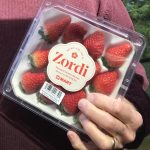 “I’ve spent my whole life working on our crops of beans, soybeans, and many others,” Call said. “And I’ve always known there’s a critical need for agriculture to become more sustainable throughout the whole growing cycle.
“I’ve spent my whole life working on our crops of beans, soybeans, and many others,” Call said. “And I’ve always known there’s a critical need for agriculture to become more sustainable throughout the whole growing cycle.
“We must use AI and robotics to produce more for less and overcome the future climate challenges—that’s the essence of the technological revolution Zordi is helping to lead.”
Call thinks the power of that small Zordi prototype in Vineland could go beyond even that.
“I believe, ultimately, we can leverage the Zordi technologies to literally help feed the world through boundless agricultural efficiency,” he said.
People Behind the Robotic Arms
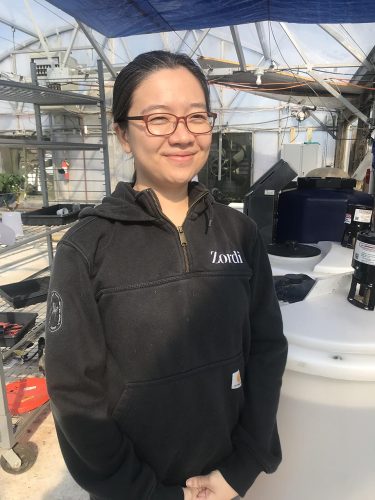 Gilwoo Lee, pictured right, is an expert in machine learning and robotics. She holds her PhD from Washington State University and master’s degrees from both Carnegie Mellon and MIT, all in computer science with a research focus on AI and robotics. Her undergraduate degree from MIT is in computer science and math. She was a PhD research intern with Meta’s virtual reality division.
Gilwoo Lee, pictured right, is an expert in machine learning and robotics. She holds her PhD from Washington State University and master’s degrees from both Carnegie Mellon and MIT, all in computer science with a research focus on AI and robotics. Her undergraduate degree from MIT is in computer science and math. She was a PhD research intern with Meta’s virtual reality division.
Zordi is “just a cool-sounding name,” according to Lee. It means “today” or “now” in the language of Mauritius, an Indian Ocean island country, which is part of Africa.
Casey Call is a sixth-generation farmer. He was head grower at Plenty and agronomist at Grimmway, Inc., the largest organic produce supplier in the United States. He holds a BS in agronomy and crop science from Cornell and an MBA from Boston University.
Ryan Knopf is a robotics expert who was a co-founder and CTO of Root AI, a harvesting robot company acquired by AppHarvest, where he served as vice-president of technology. He also served as director of hardware development at SoftRobotics. He has a BSE in mechanical engineering and computer science from the University of Pennsylvania.

